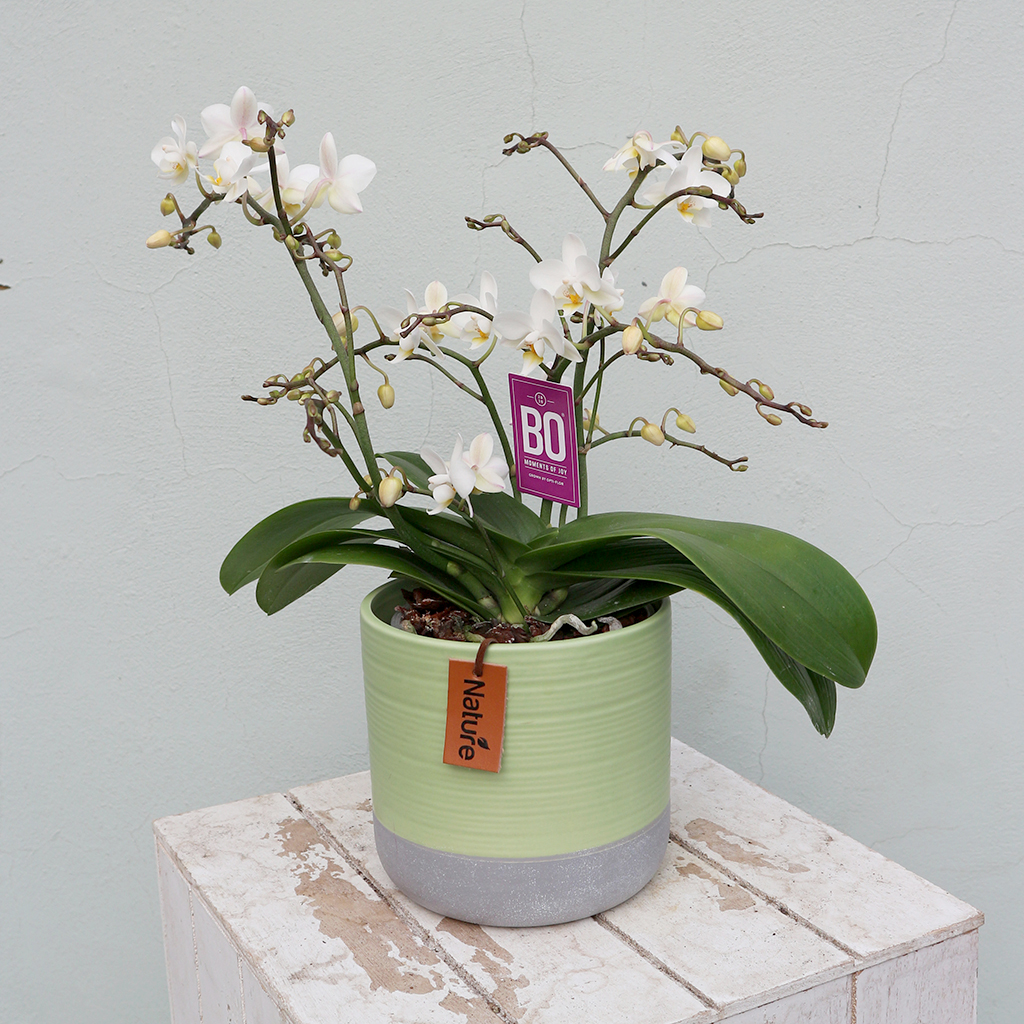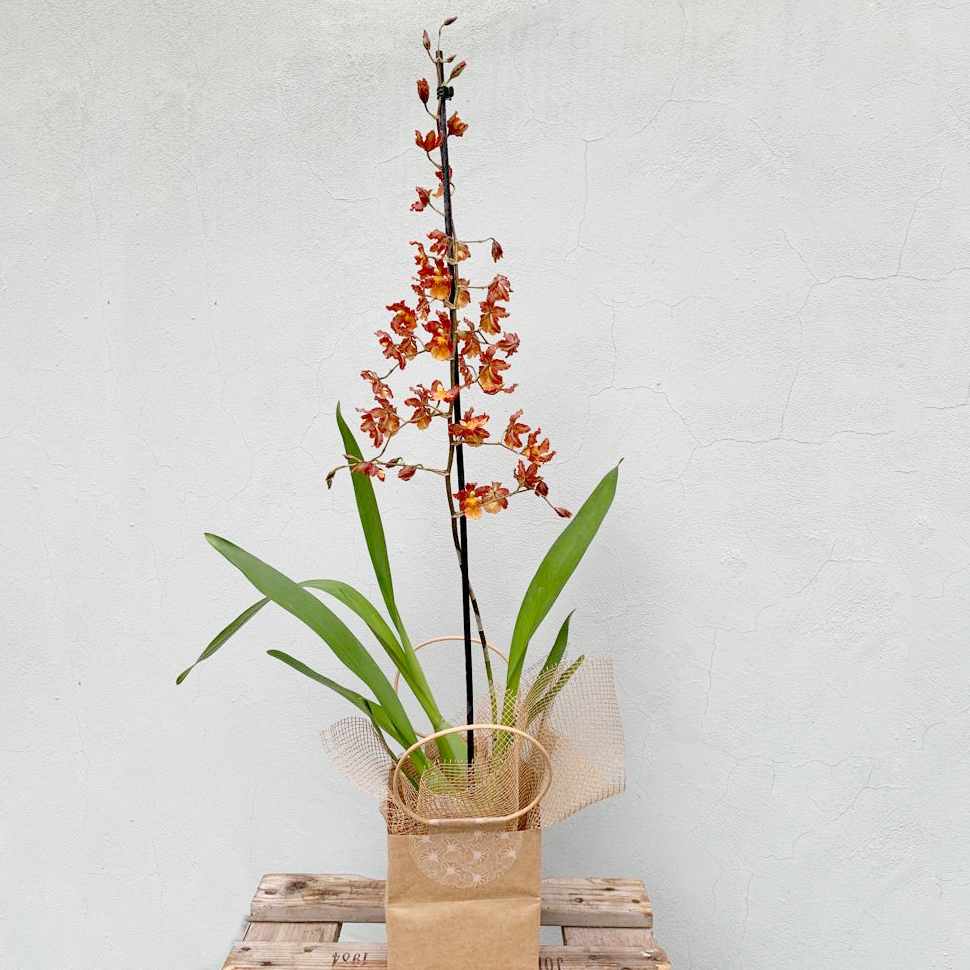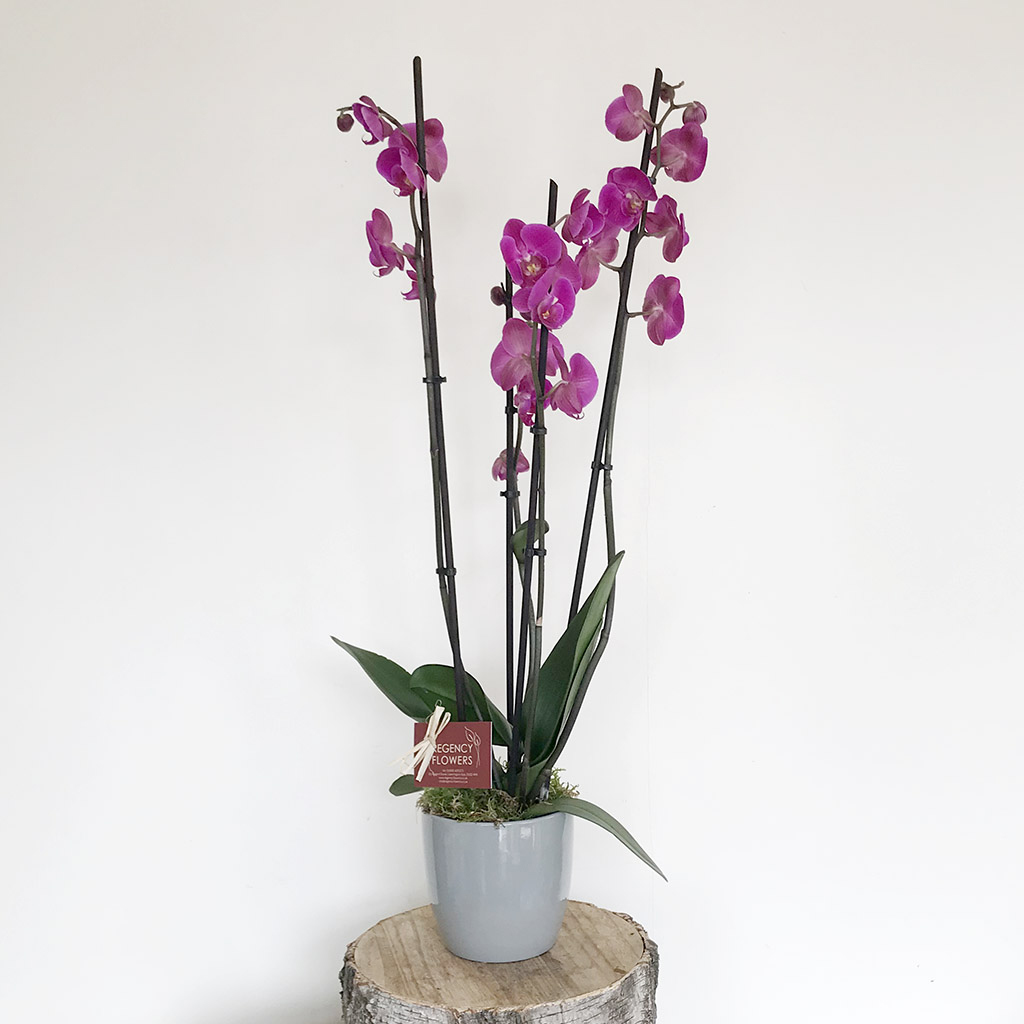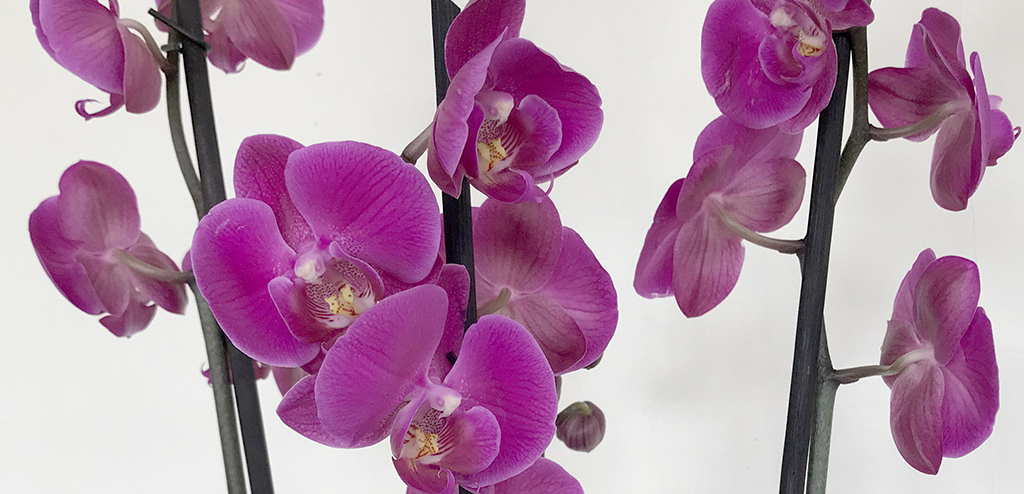As a beautiful, flowering houseplant, orchids make wonderful decoration for your home, a great gift to give instant and lasting floral pleasure to a friend, colleague or loved one, and they also might be one of the monthly or quarterly plant deliveries you receive as part of one of Regency Flower’s Houseplant Subscription Packages.
Orchids are varied and take many different shapes, forms and colours which may be why many people collect them.
Some people fear that orchids, being delicate and exotic-looking, may be too temperamental and difficult for them to keep alive. However, knowing just a little about them helps give them the care and conditions they need to thrive. This post gives a few key tips to keep your orchids healthy and long-lived. You may be pleased to know that, like many houseplants, less is more when it comes to care…

1. How to Water an Orchid
Indoor potted plants are often killed by kindness, with one of the most common causes of being overwatered by anxious plant-parents and the same is true for orchids. Luckily, if you know what you’re looking for, orchids will actually tell you whether they need water with a simple colour-coded signal!
The best way to tell whether an orchid needs watering is to look at the colour of its roots. The roots of orchids are coated by a spongey layer which absorbs and stores water. When this spongey layer is moist and full of water, it is green. When it dries out, it is grey/white.
So if the roots of your orchid plant are green in colour, they don’t need water. If they a pale grey or white in colour, they need a drink.
The other thing you must think about when watering is drainage. The roots of an orchid will rot if they sit in water and become waterlogged so their plant pot should have good drainage.
Special orchid planters have a humped base (like the shape of the bottom of a wine bottle) which keeps the plastic pot with the orchid in it suspended above any pool of water which drains through the holes in the bottom of the pot, keeping the roots out of the excess water.
If your potted orchid is displayed within a normal, flat-bottomed planter you may wish to take the plastic pot out of its decorative planter pot to water it, letting excess water drain out over the sink before replacing it in its planter to avoid water pooling around the roots.

2. Where to Place an Orchid

3. How to Give Orchids the Right Conditions
4. How to Encourage New Orchid Flowers


Recent Comments